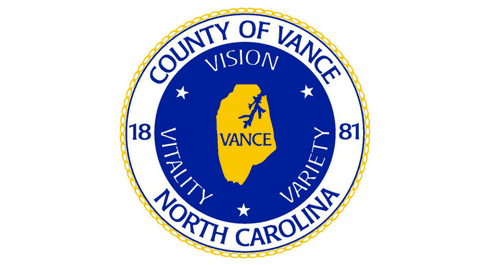In one week, the U.S. is scheduled to launch a new telescope into space and scientists are eager to analyze the information that it will send back to Earth. The project, which bears a $10 billion price tag, also bears the name of a local man who rose to great heights in this nation’s space program.
James Edwin Webb was the son of John Frederick Webb and was born on the family farm near Stem, in the Tally Ho community. When his father became superintendent of Granville schools in the early 20th century, Jim Webb moved to Oxford.
And on Dec. 22, the James Webb space telescope will catapult into space for its monthlong journey to reach its destination. Visit https://webbtelescope.org/ to read more about the telescope and its mission.
On Wednesday’s Town Talk, Mark Pace and Bill Harris discussed Webb’s life and just how he ended up running NASA back in the early 1960’s.
The Webb telescope dwarfs the Hubble in size – it’s four stories tall, Pace said, and its sun shield is the size of a tennis court; Hubble’s is a mere eight feet in diameter. Others have compared the two this way, Pace added: Hubble is a horse and buggy and Webb is a Mercedes.
Join Pace at the Granville County Museum Thursday, Dec. 16 at 2 p.m. to learn more about Webb’s life, his achievements and just how he got a telescope named after him. Contact the museum at 693.9706 to join virtually.
“He was a pretty big deal for astronomy,” Pace said of Webb and his accomplishments in the space program.
But just how did someone from Granville County end up running NASA?
Pace said Webb, who was known to have a photographic memory, graduated from UNC-Chapel Hill in 1928. But like so many other young people at that time, his life was interrupted by The Great Depression. He had to come back home and help his family, Pace said. He joined the Marine Corps and became a Marine aviator.
Over the course of his career, he became an attorney, worked in private industry and in the office of a congressman from North Carolina. These experiences, along with being in charge of large corporations and government agencies in Washington, D.C., all contributed to Webb being a top candidate to run NASA and help the United States compete in the Space Race.
As Pace noted, the U.S. was scrambling in the late 1950’s with its space program, but Lyndon Johnson told newly elected President John F. Kennedy about this fellow, Jim Webb, who he thought would do a good job at NASA.
“They needed somebody to take control of the situation,” Pace said. Somebody with qualifications and experience. Someone like Webb. He got called to the White House in 1961, and Pace said there’s a photo of Webb with JFK as the president announced his plan to put a man in space.
Apparently, Webb’s wife learned of her husband’s new job on the radio – it was such a whirlwind decision, he didn’t have time to tell her before he accepted.
Webb was a New Deal Democrat, and Pace said he had what it took to get the job done – he could play the Washington insiders game, and he wasn’t shy about making deals or shaking hands to achieve the mission.
“He freely admitted he wasn’t a scientist or an engineer,” Pace said, but he was knowledgeable about aviation and management to keep all the moving parts at NASA to carry out JFK’s promise to land a man on the moon by 1970. .And, in Pace’s opinion, Webb should be known not just as the guy who put a man on the moon, but as the guy who kept NASA on solid footing.
“That’s his real legacy, for me.” Webb was NASA administrator from 1961 to 1968, during which time the U.S. saw Alan Shepard make the first manned space flight and the creation of the Johnson Space Center in Houston, TX. Much of the groundwork for the Apollo manned space mission was completed during Webb’s term; Neil Armstrong’s historic moon walk was in July 1969.
When Richard Nixon became president and Webb no longer was in charge at NASA, he worked as a consultant (Webb was also an attorney), and he worked at the Smithsonian Institution – he became head regent there, Pace said. He also wrote a book on management and worked with the National Geographic Society.
He was a low-key kind of a person, Pace noted. “But he really wanted to get the job done.”
Webb died in 1992. He is buried in Arlington National Cemetery and his modest tombstone reads “James Webb, public servant.” In 2018, a historic marker was placed on College Street in Oxford to honor the hometown hero. The marker is located in front of C.G. Credle Elementary School.
And if you’ve ever visited the National Air and Space Museum in Washington, D.C., you have Webb to thank.
He created it.
Click Play

















